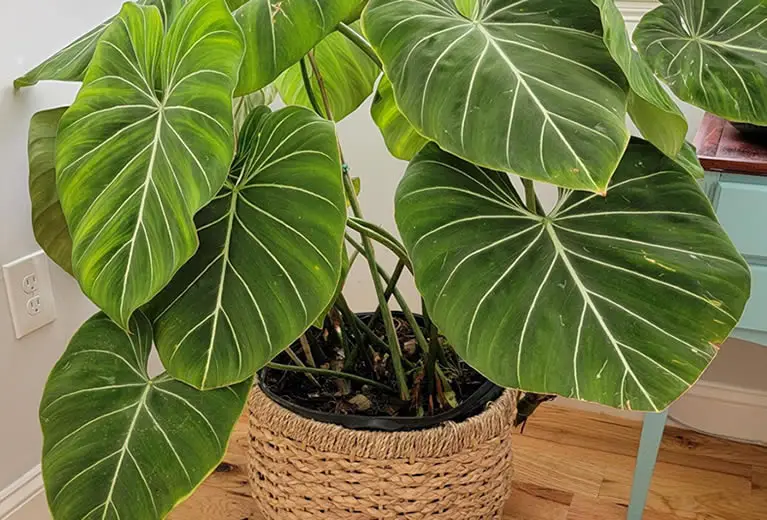Philodendrons are the quiet stars of indoor gardening—easygoing, adaptable, and bursting with leafy personality. With varieties ranging from delicate trailing vines to bold, architectural floor plants, there’s a philodendron for just about every space and style. Whether you’re new to houseplants or building a tropical collection, these beauties are nearly foolproof with just a little care.
Here’s how to grow healthy, vibrant philodendrons indoors, how to troubleshoot common problems, and a look at some of the most popular and beloved varieties.
Table of Contents
- Ideal Lighting Conditions to Keep Philodendrons Thriving
- Creating the Perfect Soil and Watering Schedule
- Maintaining the Right Temperature and Humidity Levels
- Fertilizing Routine to Encourage Healthy Growth
- When and How to Repot Your Philodendron
- How to Prune and Shape Philodendrons for Fuller Growth
- Easy Propagation: How to Multiply Your Philodendron Collection
- Where to Place Your Philodendron for the Best Results
- Popular Philodendron Varieties to Know and Grow
- Common Philodendron Problems and How to Fix Them
- Final Thoughts: Why Philodendrons Belong in Every Plant Lover’s Home
Ideal Lighting Conditions to Keep Philodendrons Thriving
Philodendrons grow best in bright, indirect light but are well-known for adapting to lower light conditions.
If you’ve got a north- or east-facing window or a filtered spot in a sunnier room, your philodendron will be content.
Avoid harsh direct sunlight, which can bleach or burn the leaves, especially in thinner-leafed trailing types.
Creating the Perfect Soil and Watering Schedule
Use a well-draining potting mix that retains some moisture but doesn’t stay soggy.
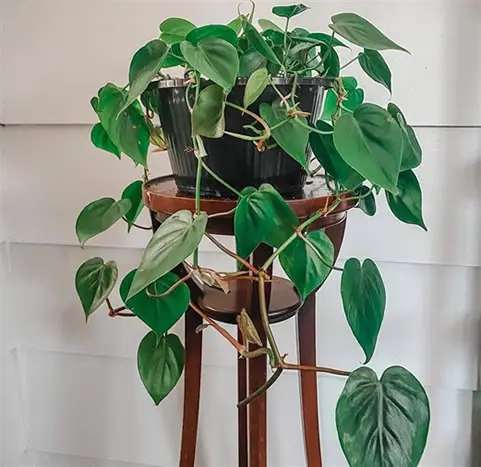
A mix with peat, coco coir, perlite, and a touch of orchid bark is ideal.
Water thoroughly when the top inch or two of soil feels dry.
Most philodendrons are tolerant of underwatering but are more prone to root rot if kept too wet.
Always empty excess water from the saucer and avoid letting the roots sit in standing moisture.
Maintaining the Right Temperature and Humidity Levels
Philodendrons thrive in indoor temperatures between 65°F and 80°F.
Most varieties are tropical, so they enjoy moderate to high humidity but are forgiving in average indoor air.
If you notice crispy leaf edges or slow growth in winter, misting or using a pebble tray can help give them the extra boost they like.
Fertilizing Routine to Encourage Healthy Growth
Feed philodendrons once a month during the growing season with a balanced, water-soluble fertilizer at half strength.
Use a good 20-20-20 feed, like this fertilizer.
Cut back or skip fertilizing during winter when the plant’s growth naturally slows.
When and How to Repot Your Philodendron
These plants like room to grow but don’t need frequent repotting.
Repot every 1–2 years or when the roots begin to circle the inside of the pot.
Choose a container one size up and refresh the soil at the same time.
How to Prune and Shape Philodendrons for Fuller Growth
Trailing philodendrons benefit from regular pruning to stay bushy and full.
For upright or large varieties, trim away any yellowed or damaged leaves as needed.
You can also prune leggy stems to encourage new growth or control the plant’s shape.
Easy Propagation: How to Multiply Your Philodendron Collection
Philodendrons are incredibly easy to propagate.
Simply take a cutting with a few leaves and a node, and place it in water or moist soil.
Within a few weeks, roots will form and you’ll have a brand-new plant to pot up or share.
Where to Place Your Philodendron for the Best Results
Philodendrons are perfect for living rooms, home offices, bedrooms, or low-light corners where many other plants might struggle.
Trailing types like Heartleaf and Brasil look amazing on shelves or hanging planters, while large varieties like Selloum or Split Leaf Monstera make striking floor plants in bright spaces.
Popular Philodendron Varieties to Know and Grow
Heartleaf Philodendron (Philodendron hederaceum)
A classic trailing variety with smooth, deep green heart-shaped leaves.
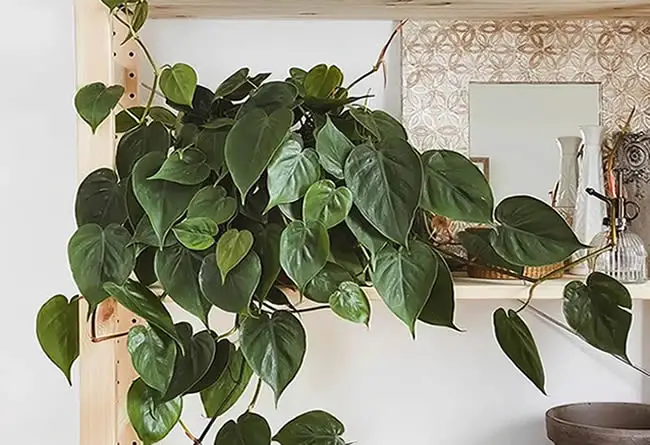
It’s fast-growing, very forgiving, and perfect for shelves or hanging baskets.
Philodendron ‘Brasil’
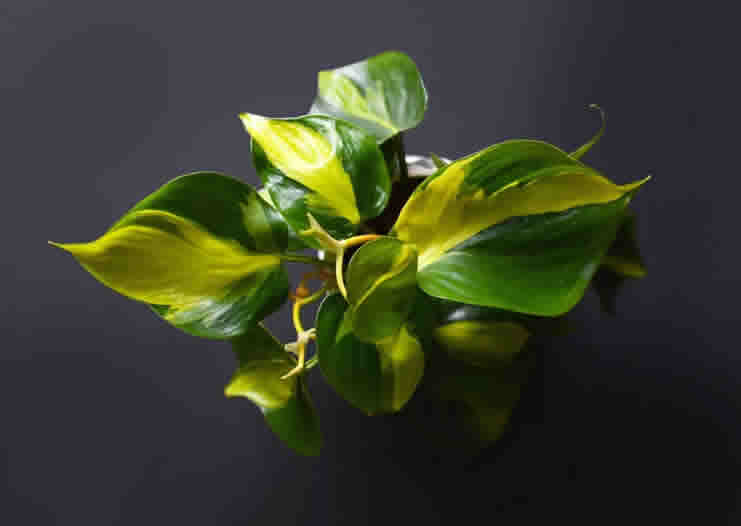
This variegated form of the Heartleaf features lime-green and yellow streaks down the center of each leaf.
It’s just as easygoing but adds a fun splash of color.
Philodendron ‘Prince of Orange’
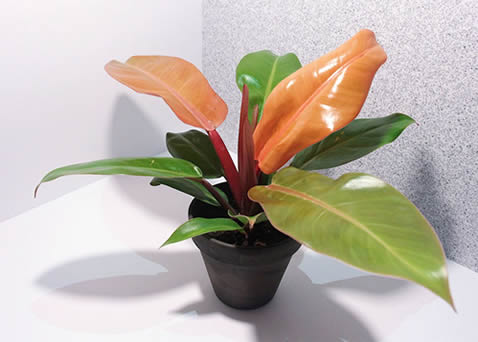
A compact, self-heading variety with new leaves that emerge bright orange before maturing to green.
It adds bold, warm tones to any plant collection.
Philodendron ‘Moonlight’
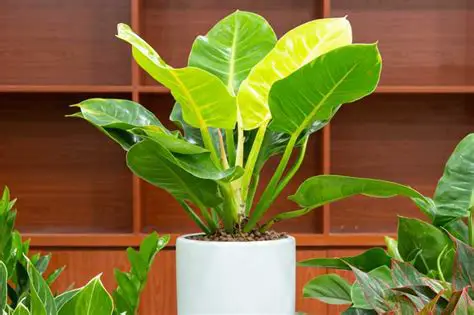
A bright, lime-green upright philodendron with glowing, almost neon foliage.
It’s eye-catching, low-maintenance, and doesn’t trail.
Philodendron ‘Gigas’

A rare, velvety climbing variety with deep green, almost bronze leaves and prominent veining.
It’s a collector’s favorite that thrives with a moss pole for support.
Philodendron ‘Selloum’ (also known as Philodendron bipinnatifidum)
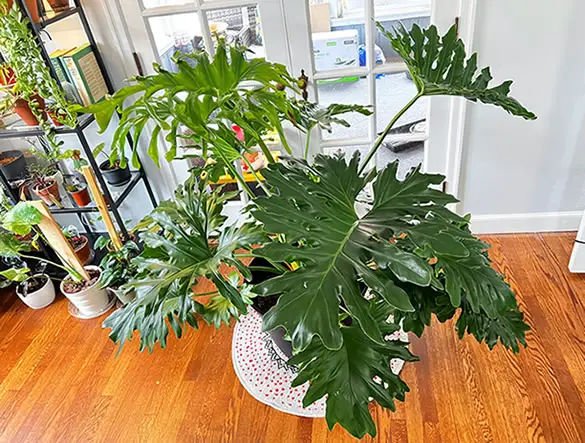
A large, upright plant with deeply lobed, wavy leaves. It’s bold and structural, great as a floor plant in larger rooms.
Philodendron ‘Split Leaf’ (often confused with Monstera deliciosa)
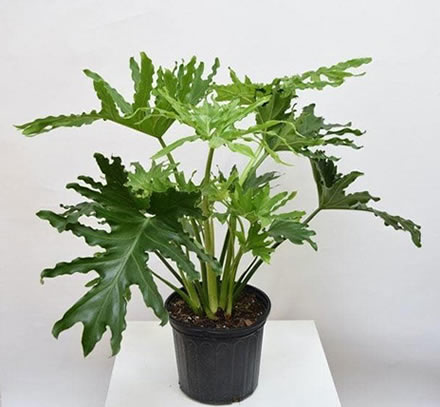
With its large, fenestrated leaves and dramatic spread, this variety is sometimes mislabeled, but no less stunning.
A must-have for that tropical, jungle look.
Common Philodendron Problems and How to Fix Them
Why Are My Philodendron Leaves Turning Yellow?
This usually indicates overwatering or poor drainage.
If just one or two leaves are yellowing, it could be natural aging.
If many are yellow at once, it’s time to check the roots and let the soil dry out more between waterings.
Dealing With Brown or Crispy Leaf Edges
Often a sign of low humidity, inconsistent watering, or a buildup of salts from fertilizer or tap water.
Fix it by adjusting your watering routine, flushing the soil every few months, and boosting humidity if your home is very dry.
What Causes Leggy Growth or Stretched Stems?
This happens when the plant isn’t getting enough light.
Move it closer to a brighter window with filtered light and pinch back long stems to encourage bushier growth.
Troubleshooting Drooping or Limp Leaves
Can be caused by underwatering or overwatering.
Check the soil moisture—if it’s bone dry, give it a deep watering.
If it’s soggy, let the soil dry out and consider repotting if root rot is suspected.
How to Fix Pale or Faded Leaves
Usually caused by too much direct sun or not enough nutrients.
Move the plant out of harsh light and resume a regular feeding schedule if you haven’t fertilized in a while.
What to Do About Sticky Residue or Pests
A sign of spider mites, aphids, or mealybugs.
Wipe the leaves with a damp cloth and treat with neem oil or insecticidal soap as needed.
Final Thoughts: Why Philodendrons Belong in Every Plant Lover’s Home
Philodendrons are the perfect mix of beauty and ease.
Whether you’re drawn to trailing vines or bold floor plants, there’s a variety that fits your style—and your light conditions.
With just a little attention to light, water, and the occasional haircut, your philodendron will reward you with lush, leafy growth for years to come.

